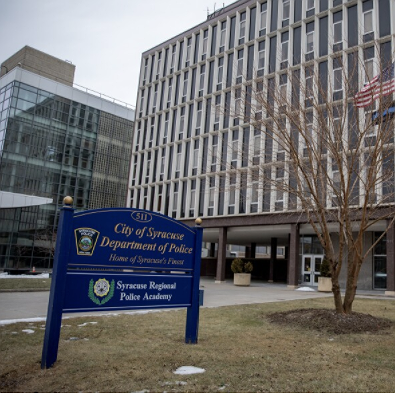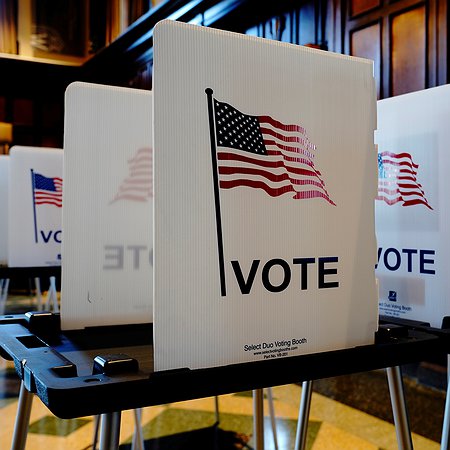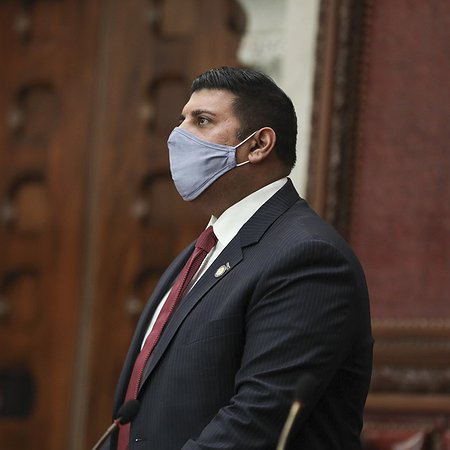Syracuse Police Falsely Tie a Teen’s Rearrest to Bail Reform
The Syracuse Police Department falsely claimed that a teen's rearrest on gun charges was tied to bail. WAER reprinted these claims without any correction or further information.
The Briefing

A teen arrested on gun charges was later rearrested for the same charges. Possessing a firearm is a bail-eligible offense. This case was in no way related to bail reform. However, this did not stop the Syracuse Police Department from falsely tying this case to bail reform and calling for rollbacks to the law. Syracuse Police Lieutenant Matt Malinowski lied to the public when he claimed that bail reform was implicated in this case and when he blamed the bail law for a rise in crime, but none of his assertions were challenged by the reporter in the article from WAER.
Deeper Dive
Bail
Adults and children accused of gun possession are all eligible to be detained pre-trial. Possession of a loaded firearm, which is classified as a violent felony charge in New York under 265.03, and allegations of other violent felonies remain eligible to have bail set. No pre-trial reforms in New York changed this fact.
For all children aged 13-17, as prior to 2020, certain serious or violent-classified charges are eligible to remain in adult criminal court. These cases may be removed from adult criminal court and heard in family court either on consent of a prosecutor or by the judge in recognition of the age of the accused person and widely accepted science around juvenile brain development (Raise the Age added 16 and 17-year-olds to this group). Importantly, when these cases are heard in family court, judges there actually have an even greater ability to detain the children who appear before them. Family court judges also have a wide range of pre-trial monitoring, curfew, and programming mandates to impose on the accused child.
Importantly, when Syracuse Police Lieutenant Matt Malinowski said “[the teen] may need to be secured while he reforms his behavior,” he misrepresented the purpose of bail not only in New York but in every jurisdiction in the country. Bail is not intended as a “reform” mechanism in New York or anywhere else, as bail exists only in a pre-trial context where the accused person is presumed innocent. To effectively sentence a person to a period of incarceration—whether as a punishment or attempt at “reforming” the person—while they are considered innocent of the allegations against them amounts to an unconstitutional presumption of guilt. Bail reform has nothing to do with this being a constitutionally verboten use of bail.
Young People and Incarceration
Malinowski’s claims also deny the existence of decades of data undermining the idea of incarceration as a “rehabilitation” mechanism in the first place. Incarceration not only fails to “rehabilitate” people subjected to confinement but is also independently deleterious to their wellbeing, health, and future prospects. This is particularly true for children and young people. In a 2017 study by the American Academy of Pediatrics, “Cumulative incarceration duration during adolescence and early adulthood is independently associated with worse physical and mental health later in adulthood… For the 1.3 million children and adolescents arrested in the United States each year, incarceration may systemically degrade their healthy development.” The study’s findings affirmed the Academy’s 2011 report, which urgently called for a reduction in the number of incarcerated youth.
The purpose of Raise the Age legislation—which is often criticized alongside reforms to pre-trial practices such as bail—was to reflect widely accepted data and scientific developments related to juvenile brain development and the damaging effects of adult criminal proceedings and sentencing on children. Not only was New York late to a nationwide policy trend reflecting these developments, but the changes have been modest, with significant carve-outs and a maximum age (18 years) that is far lower than widely accepted age of brain maturation (25 years). To suggest that New York’s criminal legal policies are insufficiently punitive for children and young adults is simply not grounded in fact or practice.
Police Efficacy
This article also highlights a common refrain from police, which is that the reason that police fail to prevent crime is somehow tied to reforms implemented in 2020. “Everyone wants to say 'well what are the police doing?',” Malinowski said. “We're doing every part that we can.”
Based on FBI data, American police are actually “the worst crime solvers in the Western world.” In 2018, only about half of all violent crimes were deemed “cleared” by police, with rates remaining fairly consistent over time. But these numbers are even worse than they appear. “Cleared” cases, reported through “clearance rates,” are not the same as “solved” cases, with the former representing a much lower bar for police. For example, a case may be considered “cleared” if an arrest is made even if that person is later exonerated or if a possible suspect dies. Syracuse Police have historically performed at around an average rate, although sometimes below, for American law enforcement agencies by this metric.
Police spend just 4% of their time addressing “violent crime,” and, in any event, these efforts do not prevent future harm or address its root causes. Crime rates, which are also kept and defined by the police, also show a direct correlation between falling rates of incarceration and increased safety. Conversely, increases in crime between 2020-2021, which also coincided with the COVID-19 pandemic, were accompanied by the highest police department budgets in history. While other job sectors experienced significant losses, police employment fell by less than 1% in 2020, with hiring initiatives—funded by big budgets—introduced to more than compensate with ballooning headcounts in the time since.
The longstanding truth is that police react to harm rather than preventing it from occurring. Like Lt. Malinowski, however, many “police sources” have elected to use recent reforms as a scapegoat for the longstanding issues of police inaction and inefficacy.








